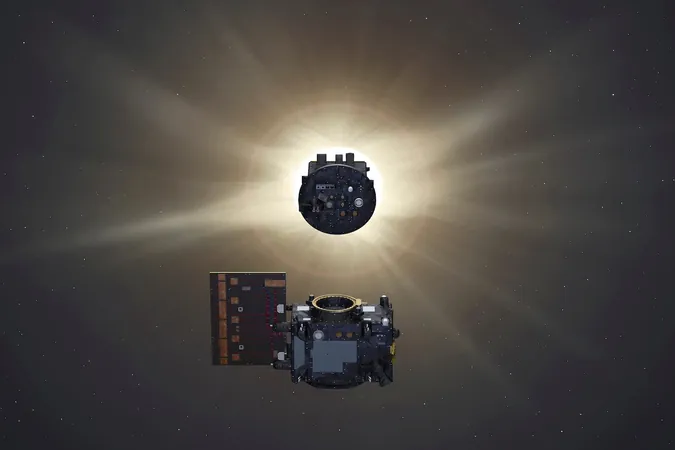
The Voyager Probes: The End of an Era Approaches!
2024-12-03
Author: Amelia
As we brace ourselves for a bittersweet farewell, the legendary Voyager probes, NASA's pioneering emissaries of interstellar exploration, are facing their twilight years.
A Journey Beyond Limits
Launched in 1977, Voyager 1 and Voyager 2 were designed for an ambitious mission to survey the outer planets of our solar system. Fast forward to today, and these probes have transcended their original goals, journeying over 15 billion miles into the cosmos, far beyond the realms they once studied. Voyager 1 entered interstellar space in 2012, followed by Voyager 2 in 2018, marking significant milestones in humanity's quest for knowledge about the universe.
Both spacecraft are powered by radioisotope thermoelectric generators, which harness the decay of plutonium-238 isotopes for energy. However, after decades of operation, their power sources are dwindling. Reports indicate that the probes are losing about four watts of power each year, leading scientists to make the tough decision of shutting down non-essential scientific instruments as they prepare for the inevitable end of their missions. The clock is ticking, and both Voyager probes may succumb to their diminishing energy reserves before they reach their 50th anniversary in space in just over two years.
Communication Challenges
In recent weeks, NASA engineers faced a significant scare when Voyager 1 unexpectedly lost communication in October. Fortunately, after extensive troubleshooting, contact was reestablished on November 18. However, severe power limitations mean that the spacecraft has to operate with extreme caution. A recent attempt to activate one of its heaters triggered a safety feature that shut down non-essential systems to save energy.
This isn’t the first time Voyager 1 has encountered obstacles. Earlier this year, it returned garbled messages to mission control, prompting engineers to switch to a backup set of thrusters to keep it on its course. Meanwhile, Voyager 2 has also faced communication challenges, including a temporary blackout that concerned scientists but was resolved without lasting damage.
Looking Back with Gratitude
Despite the looming end, the Voyager mission has been nothing short of revolutionary. It has achieved remarkable feats, including crossing the heliopause — the region marking the outer boundary of the solar system influenced by the Sun’s solar wind. As Voyager project manager Suzanne Dodd expressed, “We’re all happy and relieved that the Voyager probes have both operated long enough to make it past this milestone. Now we’re looking forward to what we’ll be able to learn from having both probes outside the heliopause.”
The scientific community is eager to see how the Voyagers will continue to contribute to our understanding of cosmic phenomena until their final days. While their future may be uncertain, the legacy of the Voyager program will undoubtedly endure, having expanded our horizons and ignited our curiosity about the universe beyond our own.
The Final Countdown
As we reflect on this iconic mission and the knowledge it has yielded, the question remains: What will the Voyagers reveal to us before they fade into the cosmic night? Time will tell, but for now, we celebrate their extraordinary journey and the awe-inspiring discoveries they’ve provided. Don’t miss the chance to witness history in the making!









 Brasil (PT)
Brasil (PT)
 Canada (EN)
Canada (EN)
 Chile (ES)
Chile (ES)
 España (ES)
España (ES)
 France (FR)
France (FR)
 Hong Kong (EN)
Hong Kong (EN)
 Italia (IT)
Italia (IT)
 日本 (JA)
日本 (JA)
 Magyarország (HU)
Magyarország (HU)
 Norge (NO)
Norge (NO)
 Polska (PL)
Polska (PL)
 Schweiz (DE)
Schweiz (DE)
 Singapore (EN)
Singapore (EN)
 Sverige (SV)
Sverige (SV)
 Suomi (FI)
Suomi (FI)
 Türkiye (TR)
Türkiye (TR)